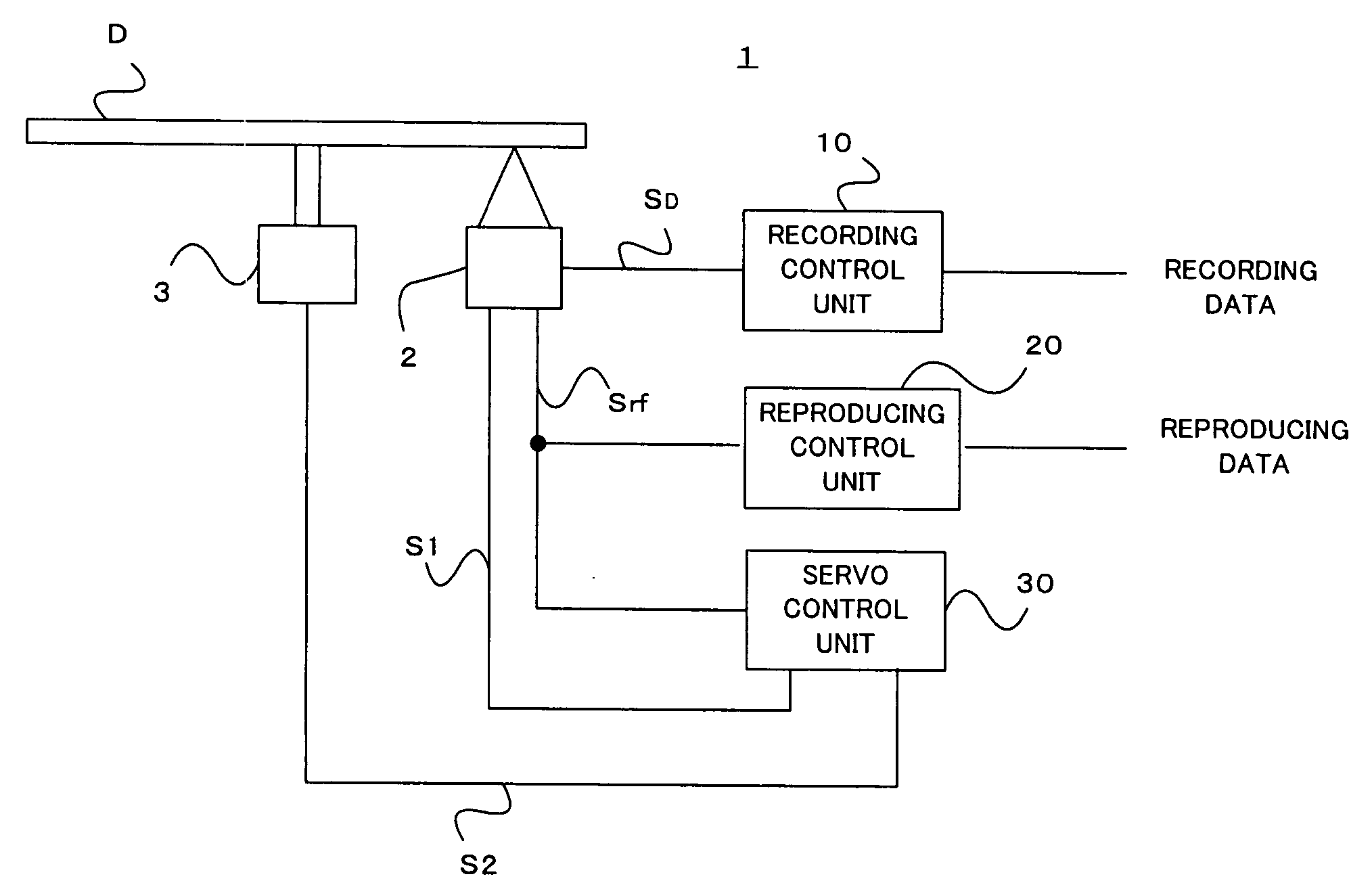Information recording device and information recording method
a technology of information recording and information recording, which is applied in the field of optically recording information, can solve the problems of difficult to obtain an accurate emitting waveform, inability to form satisfactorily marks, and sometimes worse recording characteristics, and achieve the effect of accurate formation of pits on optical discs
- Summary
- Abstract
- Description
- Claims
- Application Information
AI Technical Summary
Benefits of technology
Problems solved by technology
Method used
Image
Examples
1st modification
(1st Modification)
[0069] Next, the strategy according to the first modification will be explained. FIGS. 9A to 9C show the laser driving waveform of each recording mark length according to the first modification. The first modification is different from the basic embodiment in that the top pulse TP is formed by the two pulses for the recording mark belonging to the group G3. In the first modification, the laser driving waveforms of the recording mark lengths belonging to the groups G1 and G2 are identical to those of the basic embodiment shown in FIGS. 8A to 8C.
[0070] As to the recording marks belonging to the group G3, i.e., 5 T, 8 T, 11 T and 14 T, it is determined whether the top pulse TP is one, like the basic embodiment shown in FIGS. 8A to 8C, or two, like the first modification, dependently on the recording characteristic of the optical disc subjected to the recording. Namely, the first modification is effective when 5 T mark can not be preferably formed by only a pair of th...
PUM
| Property | Measurement | Unit |
|---|---|---|
| time | aaaaa | aaaaa |
| length | aaaaa | aaaaa |
| width | aaaaa | aaaaa |
Abstract
Description
Claims
Application Information
 Login to View More
Login to View More - R&D
- Intellectual Property
- Life Sciences
- Materials
- Tech Scout
- Unparalleled Data Quality
- Higher Quality Content
- 60% Fewer Hallucinations
Browse by: Latest US Patents, China's latest patents, Technical Efficacy Thesaurus, Application Domain, Technology Topic, Popular Technical Reports.
© 2025 PatSnap. All rights reserved.Legal|Privacy policy|Modern Slavery Act Transparency Statement|Sitemap|About US| Contact US: help@patsnap.com



